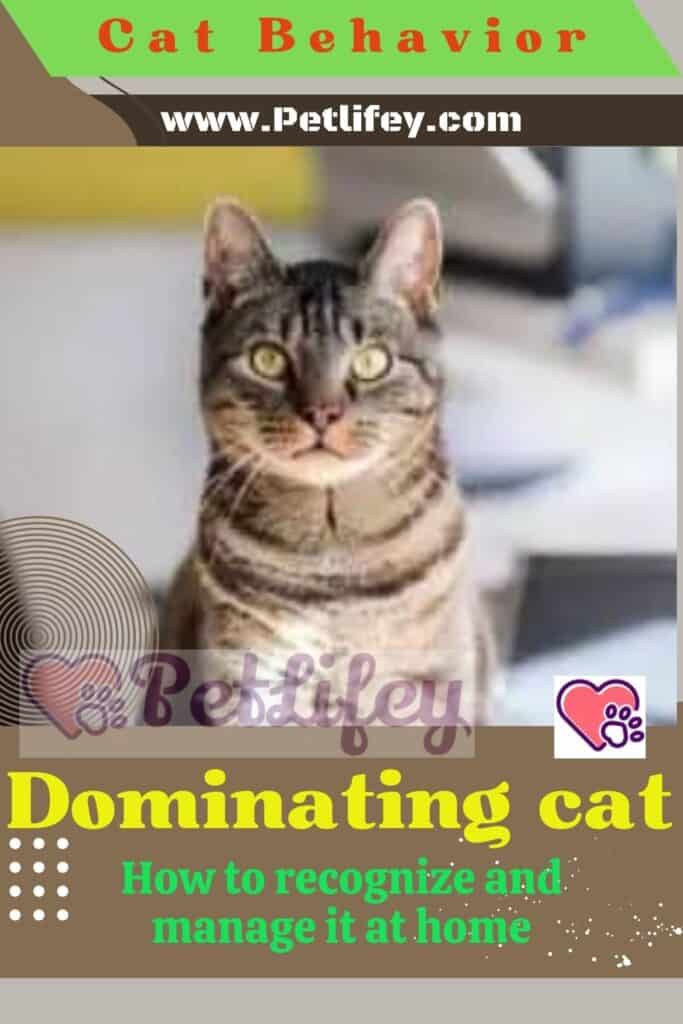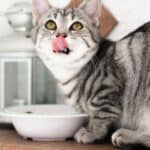
The dominant cat in the house can be a problem: what are his attitudes, the triggers of the ‘alpha factor’.
A dominant cat is not necessarily aggressive, but still represents a problem to be solved for the success of the coexistence with the human and with any other animals present in the house. It is not that difficult to recognize but above all it can be educated to behave differently: it would be better to start accustoming it from an early age. While some like having a ‘master cat’ for others it is a real problem to solve: here’s how.
Dominant cat: what attitudes it has
Being dominant does not only involve arrogance towards other animals, but also towards humans who live in the house or who come to visit their master: the same happens with the dominant dog. The difference between aggressive cat and dominant cat is that the former is always inclined to fight, threaten and fight with the ‘enemy’, while the dominant cat can practice a whole series of other attitudes that have little to do with the ‘enemy’ aggression. In the case of the aggressive cat, the most suitable help is that of an ethologist who will not only educate the feline but will give us valuable advice on how to manage it.
As we have mentioned, a dominant cat is not difficult to recognize, especially since these despotic attitudes are very evident from an early age, so it must be educated as a puppy. But just when the cat is a few months old is the right time to act. Its behavior can create problems of coexistence with other pets and life with children. Many of his behavioral ‘defects’ can be treated superficially by the owner, who ‘lets them pass’: one of these is letting him scratch furniture and sofas, but also not scolding the cat when he shows jealousy towards another pet.
The dominant cat usually has a defiant attitude, not always taking action with scratches and bites. Being ‘face to face’ with our cat will make him understand what is not done: although the first few times he may not listen to us and continue to ‘bully’ the members of the family, little by little he will begin to understand ‘who’s in charge’.
Of course, each cat is a story in itself with its personality, which also depends on the most dangerous cat breeds and the habitat in which they were used to living. Not only does urinating at home respond to the function of taking possession of a territory and making others understand who reigns supreme in it, but also rubbing oneself against people and furniture. When he approaches his master in this way he wants to smell him and also take possession of him.
Even the gesture of making pasta with the front legs is a behavior inherited from the mother cat (who naturally ‘dominated’ the puppies in the sense that she protected them).
Breathing nervously, blowing, wants to give the impression of being dangerous and aggressive: to this it also adds to the assumption of an arched back and a straight hair. Who could not fear a cat like this?
One of the main vices of the dominant cat is clawing on cover fabrics and pieces of furniture: in this way it not only sharpens them, but trains itself to capture its next prey. Also, having sharp claws aids him in the activity of climbing and fighting using his nails.
Even moving objects with his paw becomes an overbearing attitude of an alpha cat: in fact, everything that can be within his reach, from the position of an object to opening the doors, submits to his choice. On the other hand, the dominant cat wants to arrange everything as it suits them, so it’s no wonder!
Another typical attitude of the dominant cat is to reach the shelves, the top of the pieces of the house to control ‘its’ territory from above: in this way they would be the first to see any prey, on the other hand the cat, even the domestic one, he is a hunter. Most of the time they also do it to have a little privacy and rest in peace.
Dominant cat: the most ‘at risk’ breeds
Given that each cat has its own unmistakable personality and never identical to the other, even if of the same breed, there are some types of felines that more than others are ‘inclined’ to be dominant. Which ones are they? Abyssinians, Siamese, Rex and similar “oriental” races: these often subdue the territory and whoever is part of it to their will. The position of the bowl or litter box can also change if the cat does not want them in a certain place, and will move them with his paw himself.
These breeds in particular love to be flattered and notice when the human is able to appreciate their gifts: this forces the master to caress them and give them constant attention.
Dominant cat: how to prevent it
If we happen to make comparisons between cat and dog, let’s avoid it: they are two completely different worlds and they express themselves in a totally different way from each other. So let’s not try to recognize feline attitudes in Fido, much less the opposite. Cats try to protect their territory when they notice that the means or the attention towards them are scarce: but if there is food and drink for everyone, and the owner does not neglect them, they can live in peace.
So a lot also depends on the attitude of the human: in fact even not scolding him correctly when necessary can lead to a series of problems and also quite serious.
Not scolding the puppy cat that bites or scratches can be a problem in the future: the cat will think it can and will always take advantage of it. So education is as important as making him understand clearly that ‘ it is not done’. Giving attention to another animal, especially one that has just arrived, can also encourage this type of attitude. It is obvious that a new member of the family, waiting to be discovered, attracts our attention but let’s not forget who was already in the house with us. Let’s take some free moments to be with our ‘old’ four-legged friend: let’s give the same amount of attention to everyone, or at least let’s try!
When serving the baby food we make sure that each of the pets has their own bowl, and in different places in the house, naturally respecting the place that originally was already the other. It is essential that a dominant cat does not show aggression towards the companion who tries to eat: if he prevents him from approaching the food, the owner must intervene to block this bullying behavior.
What are the mistakes to avoid with a dominant cat

The dominant cat is generally very dynamic and active, loves to be the center of attention and as such always wants to express with euphoria its will to live (although it often ‘overflows’ in harmful attitudes towards others).
Do not force them: it is important to be persuasive and convince them to do what we humans want: we always make felines want to do what we would like in the end, without making it seem like a constraint or an obligation. Maybe we shift their attention to another object. So no orders, but persuasion!
Let’s not lock them up: although a dominant cat can be a problem at home, the solution, humanly speaking, must not be getting rid of it. We must try in every way to educate them and do their good. Due to their lively nature they would go into depression if they were locked up in a cage.
Let’s not impose a new human presence on it: coexistence with a human being can only do the dominant cat good and force it to smooth out its attitudes over time. But it is better to anticipate the arrival of a baby or a new member of the family by making him smell his things: for example in the case of a newborn we make sure that the cat becomes familiar with his things, with the room where the cradle is. etc. in short, never present the newcomer in an unexpected way and impose his presence which, at this point, is likely to be unwelcome.
Let’s not impose a new animal presence on him: even a new animal can do him good. However, we can avoid taking the old feline landlord by surprise with an ‘olfactory’ means: we pass a cloth with the smells of the first cat on the second and vice versa. In this way the two animals will make a first acquaintance by acquiring the smells of the other.
Don’t use the same spaces – the house is large enough to accommodate two animals, so why force them to live in the same place? If we have the possibility to host two Pets then it is advisable to limit an area that is only of one or the other, at least for the first time.
Do not use the same items: how do we expect the old house cat to admit that the newcomer takes water and food from his own bowl? Or that he uses his own litter box? In short, it is necessary to prepare at least one litter box for each feline member of the family, and in places far from each other.
Let’s not leave them alone: it would not be prudent to leave two cats alone in the house who do not know each other. It is advisable that when the two cats meet for the first time we are there too to supervise them and possibly curb bullying attitudes of one or the other.
How much does castration affect the dominant cat
Castration usually does not work miracles and above all it does not change the personality of a feline: if the castrated cat was dominant before it will continue to be so. Same thing if it wasn’t even before the operation. So if we think that the neutered cat is the solution to his dominant attitude, we are wrong: his sexual impulses will certainly change, and perhaps something in the dominant attitude. He will no longer feel the need to mate and to desperately look for his fellow man to vent his impulses.
If we notice a change in his mood, well: would you be so carefree and cheerful after an operation like this? Let’s give him time to get used to the new condition and maybe even recover from the stitch injury.
So it is true that neutering a cat does not change its personality, but it may happen that after the operation the cat begins to show those attitudes we talked about above, such as marking the territory with urine, or reducing the risk of major diseases and often lethal.






